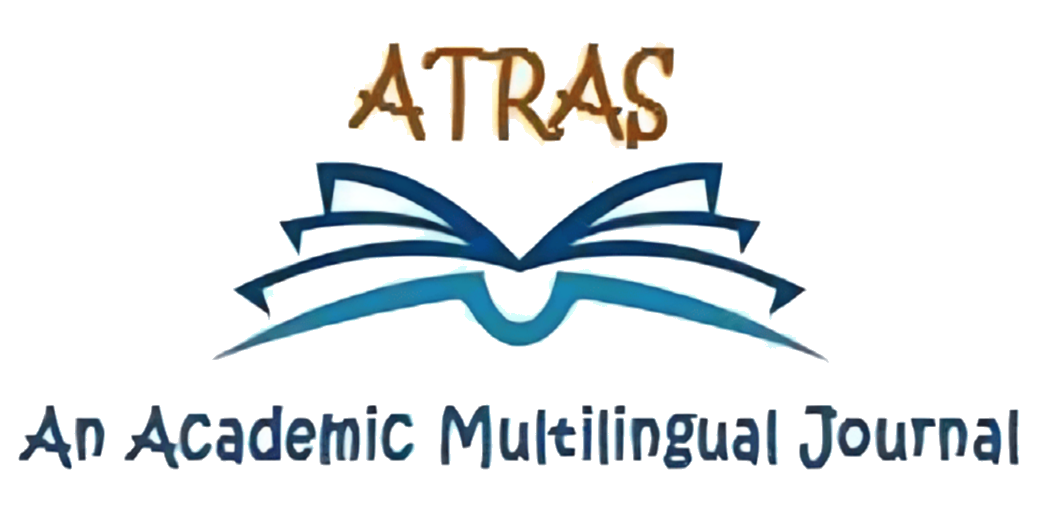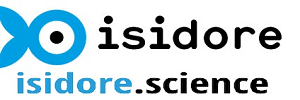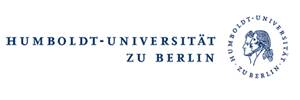Cultivating Cultural Competence: Exploring Kramsch’s Framework in Language Education
Abdelkader MAKHLOUF
University Center NourBachir, El-Bayadh, Algeria
a.makhlouf@cu-elbayadh.dz
https://orcid.org/0000-0001-6898-5975
Mhamed BOUDIA
University of Saida, Dr. Moulay Tahar, Algeria
mhamed.boudia@univ-saida.dz
https://orcid.org/0000-0001-6083-4734
Irina ANDERSEN
Mosco State Pedagogical University, Russia
irinaandersen2@gmail.com
https://orcid.org/0000-0002-5734-5208
Abstract
This article explores the intricate relationship between culture and language learning, focusing on Kramsch’s framework and its implications for cultural learning and behavior. The primary aim is to understand the significance of culture in language education and explore effective strategies for integrating cultural components into language teaching. By synthesizing insights from Kramsch (1989) and other scholars, the study adopts a comprehensive approach to examine this relationship. The methodology involves reviewing existing literature, scholarly perspectives, and empirical studies. Practical strategies for unlocking language learners’ cultural competence, such as collaboration-oriented reflection activities and experiential learning workshops, are discussed. The findings underscore the indispensable role of culture in language education and the necessity of integrating cultural dimensions into language teaching to enhance learners’ cultural competence. This study holds significant implications for language educators, offering actionable recommendations for enhancing students’ cultural competency and language acquisition. Overall, the study advocates for the incorporation of cultural components into language education to prepare learners for successful communication in an increasingly diverse and interconnected world, shaping them into effective communicators and global citizens..
Keywords: Culture, Cultural Competence, language learning, Kramsch’s Framework, language education
DOI: https://doi.org/10.70091/Atras/vol06no01.21
How to Cite this Paper :
Makhlouf, A. et al.(2025). Cultivating Cultural Competence: Exploring Kramsch’s Framework in Language Education. Atras Journal, 6 (1), 301-318
References:
Adams, J. (2010). Why is culture an important issue for language teaching and language learning?https://r.search.yahoo.com/_ylt=AwrNOEgVM55m4CA1VgFXNyoA;_ylu=Y29sbwNiZjEEcG9zAzIEdnRpZANRMzIwMjQtU0RfMQRzZWMDc3I-/RV=2/RE=1721672597/RO=10/RU=https%3a%2f%2fsoar-ir.repo.nii.ac.jp%2frecord%2f15993%2ffiles%2fHumanities_Social04-09.pdf/RK=2/RS=5OEiuiwSCH0Vo0oczYFPenUpEuw-
Abdollahi-Guilani, M., Yasin, M.S., Hua, T.K., & Aghaei, K. (2012).Culture-Integrated Teaching for the Enhancement of EFL Learner Tolerance. Asian Social Science, 8, 115-120.
Apple, D. (1951). Learning Theory and Socialization.American Sociological Review, 16(1), 23–27. https://doi.org/10.2307/2087966
Benmoussat, S., & Benmoussat, N.D. (2017). Intercultural Language Teaching: Techniques to Enhance Intercultural Competence in an EFL Classroom. International Journal of Linguistics, 9, 184-197.
Boesch, E. (1991). Culture: An action-theoretical definition. In: Symbolic Action Theory and Cultural Psychology. Recent Research in Psychology(pp. 29-39). Springer, Berlin, Heidelberg.10.1007/978-3-642-84497-3_4.
Bohinski, C.A., & Leventhal, Y. (2015).Rethinking the ICC Framework: Transformation and Telecollaboration.Foreign Language Annals, 48, 521-534. https://doi.org/10.1111/flan.12149
Boumechaal, S. (2019).Problematising intercultural communicative competence in language teaching and learning.In 12th International Conference Innovation in Language Learning Conference Proceedings (pp. 108). FilodirittoEditore.
Byram, M. (1997).Teaching and assessing intercultural communicative competence. Clevedon: Multilingual Matters.
Cheng-fu, H. (2003). Integration of Source Culture and Target Culture in Foreign Language Teaching Retrieved from Semantic Scholar:.https://www.semanticscholar.org/paper/Integration-of-Source-Culture-and-Target-Culture-in-Cheng-fu/5f8ff3574db8f5d6dbc65387d757e15cb964235f
Corsen, A.H. (2009). Language, Culture, Perception and Knowledge.McNair Scholars Journal, 13, 7.
Dema, O., & Moeller, A.J. (2012).Teaching culture in the 21st century language classroom. Faculty Publications: Department of Teaching, Learning and Teacher Education. 181. http://digitalcommons.unl.edu/teachlearnfacpub/181
Hernandez Corsen, A. (2009). Language, culture, perception, and knowledge.McNair Scholars Journal, 13(1).https://scholarworks.gvsu.edu/mcnair/vol13/iss1/7
Dema, O., & Moeller, A. K. (2012).Teaching culture in the 21st century language classroom. In T. Sildus (Ed.), Touch the world: Selected papers from the 2012 Central States Conference on the Teaching of Foreign Languages (pp. 75-91). Crown Prints. https://digitalcommons.unl.edu/teachlearnfacpub/181
Fenner, A. (2008). Cultural Awareness in the Foreign Language Classroom. In N. H. Hornberger (eds.), Encyclopedia of Language and Education (pp. 2025-2037). Springer, Boston, MA. https://doi.org/10.1007/978-0-387-30424-3_155
Escobar, J. C. (2020). Target Language, Target Culture: Intercultural Competence in the SSL (Spanish as a Second Language) Classroom. In I. Management Association (Ed.), Multicultural Instructional Design: Concepts, Methodologies, Tools, and Applications (pp. 1064-1081). IGI Global. https://doi.org/10.4018/978-1-5225-9279-2.ch050
Finkbeiner, C. (2008). Culture and good language learners.In C. Griffiths (Ed.), Lessons from good language learners (pp. 131-141).Cambridge University Press.
Frank, J. (2013). Raising cultural awareness in the English language classroom.English Teaching Forum, 51(4), 2-35.
Gastil, R.D. (1961). The Determinants of Human Behavior.American Anthropologist, 63, 1281-1291.
González, J.B., Tiznado, K.E., & Hernández, M.T. (2010). Teaching target language culture: The learning of the target culture is an essential part of learning a foreign language. https://repositorio.ues.edu.sv/items/2559ffb7-0ae3-42da-9099-fd09cff2fc64
Guo, Y., &Modehiran, P. (2023).A Research on Needs Analysis from Students for Developing an Intercultural Communication Course.International Journal of Sociologies and Anthropologies Science Reviews, 3(6), 179–190. https://doi.org/10.60027/ijsasr.2023.3470
Heyes, C. (2020). Culture.Current Biology, 30, R1246-R1250.
Hinkel, E. (2012). Language learning and language culture in a changing world.Applied Research on English Language, 1(2), 45-56. https://doi.org/10.22108/ARE.2012.15454
Hua, L. (2006). On the introduction of cultural elements of target language into college English teaching.Theory and Practice in Language Studies, 2(6), 1258-1262.https://doi.org/10.4304/tpls.2.6.1258-1262
Krašovec, J. (2017). Metaphor, symbol and personification in presentations of life and values.Bogoslovnivestnik, 76(3/4), 571–584.
Kramsch, C.J. (1989). New Directions in the Teaching of Language and Culture.NFLC Occasional Papers.
Leshkevich, T. G., &Motozhanets, A. (2017).The semantic potential of language and the meaning of intercultural communication. In Proceedings of the 4th International Conference on Education, Language, Art and Intercultural Communication (ICELAIC 2017) (Vol. 142, pp. 711-714). Atlantis Press.https://doi.org/10.2991/icelaic-17.2017.164
Liddicoat, A.J. (2008). Pedagogical Practice for Integrating the Intercultural in Language Teaching and Learning. Japanese Studies, 28, 277-290.
Luke, A., & Gopinathan, S. (2006). Editors’ Introduction.Asia Pacific Journal of Education, 26, 97-97.
Nasr, M., Sabzevari, A., &Zamanian, M. (2016).Cultural Schemas and Conceptualizations: Evidence from Persian.Modern Journal of Language Teaching Methods, 6, 703.
Nguyen, H.T. (2022). Empowering Intercultural Communication Competence for Foreign Language Majoring Students through Collaboration-Oriented Reflection Activities. European Journal of Contemporary Education, 11(1), 110-122. https://doi.org/10.13187/ejced.2022.1.110
Peterson, E., & Coltrane, B. (2003). Culture in Second Language Teaching.In Culture in Second Language Teaching (Vol. EDO-FL-03-09). (ERIC Clearing House on Languages and Linguistics).Center for Applied Linguistics.
Qin, S. (2015). Applying an Intercultural Approach to Chinese College Language Teaching. Doctoral thesis, Durham University.
Ramírez, M. A., & Jiménez, J. D. (2019). Experiential learning workshops on a group of student-teachers’ intercultural awareness, as the first component of ICC (Undergraduate Master’s thesis).Universidad Pedagógica y Tecnológica de Colombia, Repositorio UPTC. http://repositorio.uptc.edu.co/handle/001/2975
Rabiah, S. (2018).Language as a tool for communication and cultural reality disclosure. In Proceedings of the 1st International Conference on Media, Communication and Culture: Rethinking Multiculturalism: Media in Multicultural Society (pp. 1-11). UniversitasMuhammadiyah Yogyakarta and UniversitiSainsMalaysia.https://doi.org/10.31227/osf.io/nw94m
Samajdar, D. N. (2020).Language in Multicultural Society. SMART MOVES JOURNAL IJELLH, 8(7), 69–77. https://doi.org/10.24113/ijellh.v8i7.10658
Sapoetra, J. (2019). Cross-Cultural Studies and Pragmatic Awareness.Proceedings of the 1st Workshop Multimedia Education, Learning, Assessment and its Implementation in Game and Gamification, Medan Indonesia, 26th January 2019, WOMELA-GG.
Tsou, W. (2005).The Effects of Cultural Instruction on Foreign Language Learning.Regional Language Centre Journal, 36, 39-57.
Turkan, S., &Celik, S. (2007). Integrating culture into EFL texts and classrooms: Suggested lesson plans. Novitas Royal Research on Youth and Language, 1(1), 18-23.
Tuna, Y.K., &Razi, S. (2016). Integrating Culture into ELT Classes: What, Why, and How? Procedia – Social and Behavioral Sciences, 232, 41-48.
Vu Ngoc, T. (2019).Kolb’s experiential learning for EFL students to enhance intercultural communicative competence. Concordia University, Chicago.
Walke, R.S. (2014). The Relation between Language, Culture and Identity.The Global Journal of Multidisciplinary Studies, 3(11).
Wei, I. P. (2023). Unlocking ESL and EFL Learners’ Intercultural Communicative Competence: The Use of Questioning Skills and Feedback Strategies. Journal of English Language and Literature,10(2), 89-95. Doi: https://doi.org/10.54513/JOELL.2023.10210
Wildner-Bassett, M.E. (1994). The Language Discovery Environment in the German Classroom of the 21st Century. Die Unterrichtspraxis/Teaching German, 27, 36-44.
Yamshinska, N., Kutsenok, N., Stavitska, I., &Korbut, O. (2023).The importance of promoting cultural awareness and understanding of cultural diversity in language classes.Науковіінноваціїтапередовітехнології [Scientific innovations and advanced technologies], Журнал «Науковіінноваціїтапередовітехнології», 10(24), 486-500.https://doi.org/10.52058/2786-5274-2023-10(24)-486-500

Copyright for all articles published in ATRAS belongs to the author. The authors also grant permission to the publisher to publish, reproduce, distribute, and transmit the articles. ATRAS publishes accepted papers under the Creative Commons Attribution-NonCommercial 4.0 International (CC BY-NC 4.0) License. Authors submitting papers for publication in ATRAS agree to apply the CC BY-NC 4.0 license to their work. For non-commercial purposes, anyone may copy, redistribute material, remix, transform, and construct material in any media or format, provided that the terms of the license are observed and the original source is properly cited.






































































